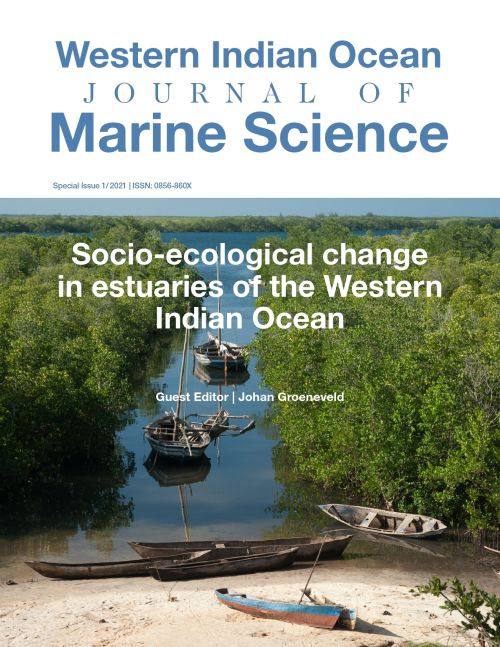Main Article Content
The residual circulation profile of the Bons Sinais Estuary in central Mozambique - potential implications for larval dispersal and fisheries
Abstract
The residual circulation in estuaries determines the net exchange of water, heat, salt, fine sediments and drifting biological organisms between estuarine and nearshore marine waters. The Bons Sinais Estuary in central Mozambique is ~ 30 km long with the city of Quelimane and an industrial port on the northern bank of its upper reaches. To investigate residual circulation in the estuary, seasonal (wet, dry and transition season) CTD profiling data were collected at 11 fixed stations between the upper estuary and mouth, and vertical current profiles were measured over a full tidal cycle at a fixed mid-estuary station. Strong longitudinal gradients in salinity and density indicated that the estuary was river-dominated during the wet season and tide-dominated during the dry season, but the water column remained partially mixed. Tidally averaged vertical profiles from the mid-estuary station revealed: uniform vertical temperatures, warmest during the wet season; depth-stratified salinity during the wet season, but uniform profiles during the dry and transition seasons with highest salinity during the dry season when the density was also highest. The density was uniform and somewhat lower in the transition season, and in the wet season the density was even lower, but stratified. The vertical velocity profile showed a classical two-layer circulation model, with downstream flow intensifying at the surface, and upstream flow at the bottom, during the wet and transitory seasons, when freshwater discharges into the estuary. The flow velocities obtained from a calibrated Hansen and Rattray model fitted the observed data well, confirming that a simplified modelling approach is adequate to describe the residual flow of the Bons Sinais Estuary. The residual circulation model provides insights useful for fisheries research and predicting the spread of water-borne pollutants in the estuary.






